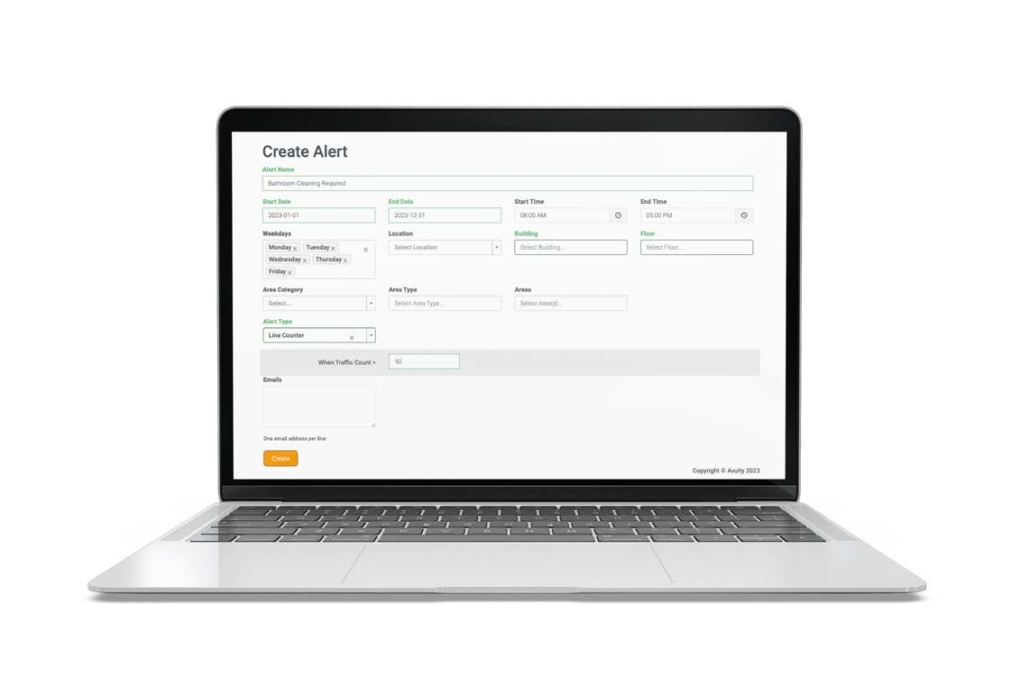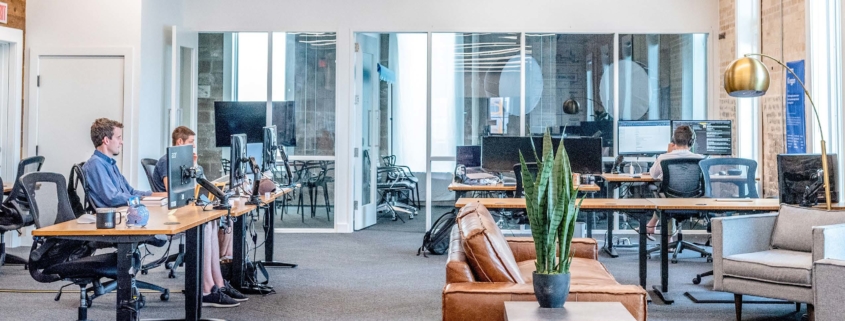Using Sensors to Improve the Workplace Environment While Reducing Costs
For a PDF Download of this case study, click here.
Background
Due to the Covid-19 pandemic, work modalities have continued to fluctuate between in-person, hybrid, and remote. While the number of employees entering the workspace every day has been reduced, the expectations for cleanliness have increased. AVUITY has recognized the ever-growing need for revised cleaning practices within the office and has made proactive steps to:
- Identify bathroom and workstation usage trends.
- Provide alerts that allow for cleaning based on usage rather than a set schedule.
- Reduce costs for employers while maintaining the same level of service for employees.
Problem
Prior to the transition to remote work, companies had their bathrooms and workstations cleaned on a daily set schedule. Less employees coming into the office, however, meant that relying on this same schedule would have these areas being cleaned multiple times a day when only a small portion were being used. This was not ideal for streamlining costs as more facilities teams were under pressure to reduce cost, meaning employers were now faced with the dilemma of how to maintain a work environment that would satisfy their employees and encourage them to return to the office while also reducing costs.
For example, if less employees were coming into the office on Mondays than on Tuesdays, having the same cleaning schedule for both days would be a waste of money; regardless, bathrooms and workstations still needed to be clean for those who were present. There is also an expectation of those who are present to receive the same level of service as before the pandemic. It was difficult for companies to determine the ideal cleaning schedule without proper data. There was no way to accurately predict when the highest number of employees would consistently be in the workplace, and which spaces they would use most often.
Solution
 AVUITY is able to provide much needed space utilization data by installing sensors at entrances to bathrooms and above workstations. By deploying a line counting sensor, which anonymously counts the number of people that cross a threshold, outside of a bathroom door, data on the number of people using the restroom can be collected and sent to a central platform. This platform may be set up to send alerts to the janitorial staff when a certain number of people have entered the bathroom. It is possible to integrate these alerts with any existing facilities management system via email, push notification, or API.
AVUITY is able to provide much needed space utilization data by installing sensors at entrances to bathrooms and above workstations. By deploying a line counting sensor, which anonymously counts the number of people that cross a threshold, outside of a bathroom door, data on the number of people using the restroom can be collected and sent to a central platform. This platform may be set up to send alerts to the janitorial staff when a certain number of people have entered the bathroom. It is possible to integrate these alerts with any existing facilities management system via email, push notification, or API.
Similarly, AVUITY makes it possible to view what workstations are used throughout the day by placing a sensor over these spaces. VuSpace can then create a daily report that highlights the exact areas that the cleaning team should target. If workstations need to be cleaned throughout the day, notifications can be sent to the team based on seeing usage and periods of inactivity.
Results
With the data from the sensors, we have seen our customers effectively reduce cleaning costs by 40%. They are able to decrease the number of cleaning shifts based on usage trends, renegotiate the contracts of cleaning staff, and cut back on the number of cleaners necessary due to shortened task lists. For example, a client had 15 floors with 4 restrooms on each floor, meaning there were 60 in total that needed to be cleaned throughout the day. Before the pandemic, the company had each of these cleaned 4 times a day. This required an extensive cleaning staff. After the pandemic, sensor data showed cleaning the restrooms this often was unnecessary on 13 floors due to lack of use, particularly on Mondays and Fridays. The client was able to cut cleaning of these in half on those days, and scale back to 3 times a day for the rest of the work week on all 15 floors.
Similarly, analyzing the usage trends for workstations allows for cost reduction as well. By becoming more efficient with desk usage, the data can be analyzed to determine how to best consolidate space. A report can be produced to show which desks need to be cleaned nightly. The cleaning staff is able to target only those spaces each evening, and clean the rest of the workstations only once a week. A notification can also be sent out to the cleaning staff throughout the day, alerting them when a space has been used, and when the motion stops. The staff can then clean individual workstations for the possibility of reuse. Multiple employees are thus able to use one desk in the span of a day, eliminating the number of workstations that need to be cleaned daily.
Using sensor technology provides companies with more knowledge about their office space, giving them the power to make informed decisions that will ultimately reduce costs. This may all be done while maintaining a safe and clean workplace environment that meets the expectations of employees.




Leave a Reply
Want to join the discussion?Feel free to contribute!